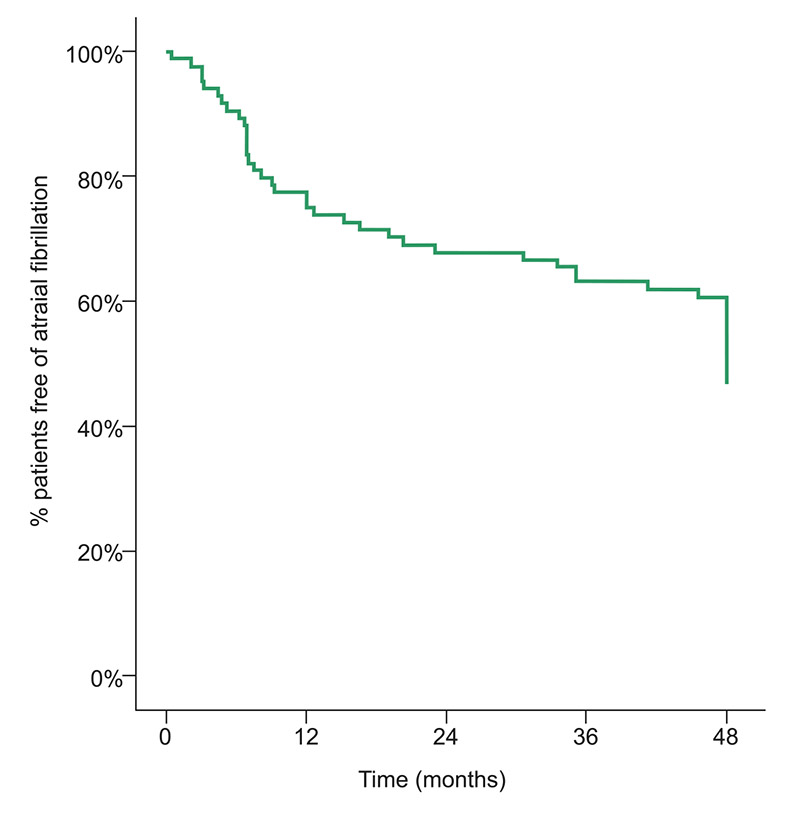Volume 114, Nº 5, May 2020
DOI: https://doi.org/10.36660/abc.20190238
ORIGINAL ARTICLE
Risk of Atrial Fibrillation after Ablation of Cavotricuspid Isthmus-Dependent Atrial Flutter: Is Combined Ablation of Atrial Fibrillation Worthwhile?
Isabella Bianco
Gabriel Odozynski da Silva
Alexander Romeno Janner Dal Forno
Helcio Garcia Nascimento
Andrei Lewandowski
Elayne Pereira
André d’Avila
Dra. Isabella Bianco

Figure 2 – Kaplan-Meier analysis of occurrence of atrial fibrillation after ablation of cavotricuspid isthmus-dependent atrial flutter.
Abstract
Background: Simultaneous ablation of atrial fibrillation (AF) and cavotricuspid isthmus (CTI)-dependent atrial flutter can be performed when both arrythmias had been recorded before the procedure. However, the best approach has not been defined in case of patients referred for ablation with CTI-dependent atrial flutter, without history of AF.
Objectives: To assess the prevalence and to identify predictors of the first episode of AF after ablation of CTI-dependent atrial flutter in patients without history of AF.
Methods: Retrospective cohort of patients with CTI-dependent atrial flutter without history of AF undergoing catheter ablation. Clinical characteristics were compared between patients who developed AF and those who did not have AF after the procedure. Significance level was set at 5%. In the analysis of predicting factors, the primary outcome was occurrence of AF after CTI-dependent atrial flutter ablation.
Results: Of a total of 227 patients undergoing ablation of CTI-dependent atrial flutter (110 with history of AF and 33 without adequate follow-up), 84 were included, and 45 (53.6%) developed post-ablation AF. The HATCH and CHA2DS2-VASC scores were not different between the groups. Recurrence rate of CTI-dependent atrial flutter and complication rate were 11.5% and 1.2%, respectively, after ablation.
Conclusions: Although ablation of CTI-dependent atrial flutter is a safe and effective procedure, 50% of the patients developed AF after the procedure. However, the role of combined ablation (CTI-dependent atrial flutter plus AF) aiming at preventing AF is still uncertain. (Arq Bras Cardiol. 2020; 114(5):775-782)
Keywords: Arrhythmias, Cardiac; Atrial Flutter; Conduction; Radiofrequency Ablation; Isthmus Cavo-Tricuspid; Arial Fibrillation/prevention.















